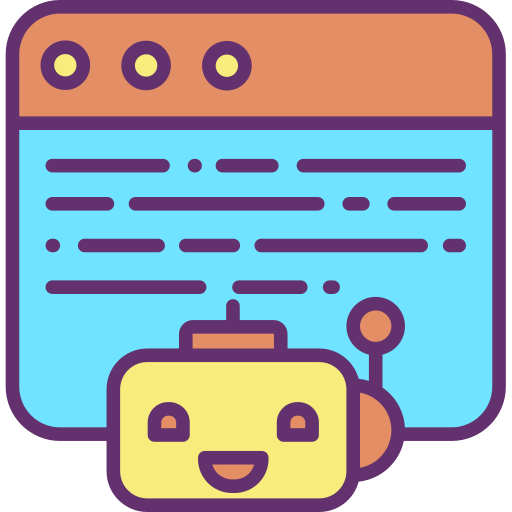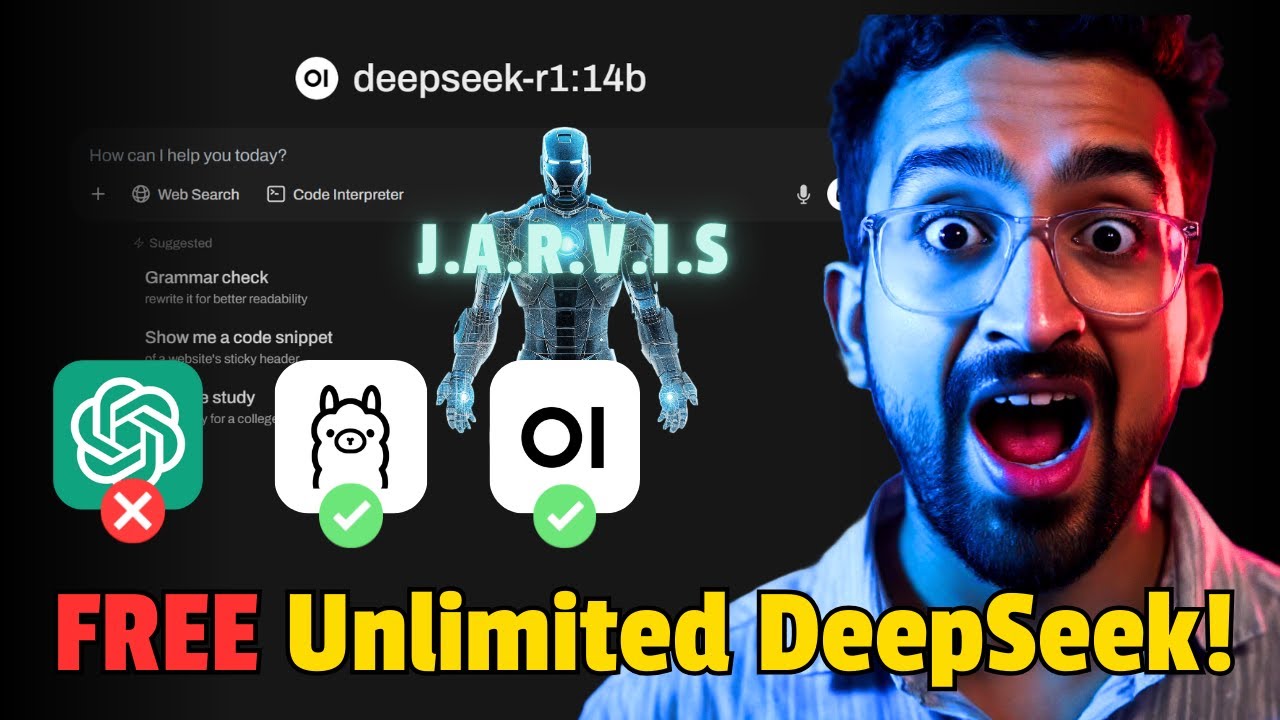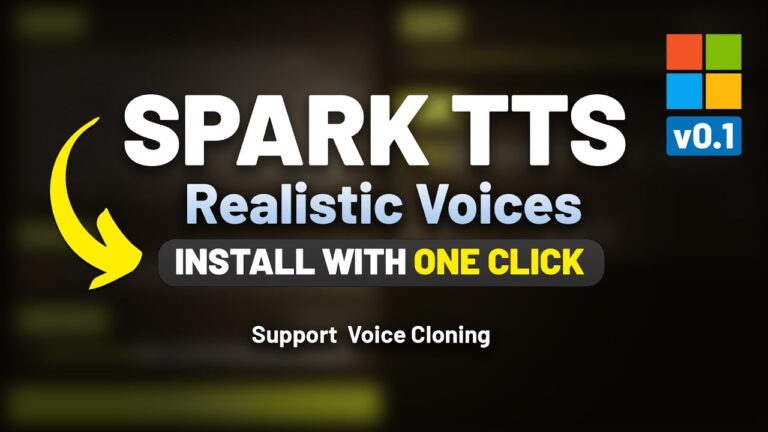Want to run a ChatGPT-level AI completely offline? No subscriptions, full privacy, and total control over your own AI assistant? Sounds like sci-fi, right? Well, it’s possible! In this guide, I’ll walk you through setting up Ollama with powerful AI models like Llama 3.2, Qwen 2.5, and DeepSeek R1—all running locally on your computer. Plus, we’ll integrate Open WebUI, web search, and even JARVIS-style voice interaction from Iron Man! 🔥
By the end of this guide, you’ll have a fully functional, voice-enabled AI assistant. Let’s get started! 🚀
🛠️ Step 1: Install Ollama (AI Model Framework)
Ollama is a lightweight framework that lets you run powerful AI models locally—no cloud servers, no privacy risks. Here’s how to install it:
- Go to Ollama’s official website.
- Download the version suitable for your operating system.
- Run the setup file and install it on your computer.
- Confirm installation by opening your terminal (or command prompt) and typing:
ollama --versionIf installed correctly, it should display the installed version.
🔧 Step 2: Install Pinokio (AI Server Manager)
Pinokio makes AI setup easy, allowing you to install Open WebUI and manage dependencies with one click.
- Download Pinokio from its official page.
- Install it like any other software.
- Run Pinokio and go to the “Discover” tab.
- Search for “Open WebUI”, then click “Download”.
- Follow the on-screen instructions—it will automatically install dependencies like Python 3.11.
🌐 Step 3: Set Up Open WebUI (AI Chat Interface)
- Open Pinokio, go to Discover → Open WebUI, and click “Install”.
- Once installed, launch Open WebUI and create an admin account.
- Check if Ollama is running:
- Open the Start Menu and search for “Ollama”.
- If it’s not running, start it manually.
🤖 Step 4: Download AI Models (Llama, Qwen, DeepSeek)
Now, let’s download some AI models:
- Go to Ollama’s Model Page.
- Choose a model based on your system specs:
- Llama 3.2B (2GB) – Fast, lightweight.
- Qwen 2.5 Coder (14B) (10GB) – Better for coding.
- DeepSeek R1 – General-purpose AI.
- Copy the download command from the website.
- Open the command prompt (CMD) and paste the command:
ollama pull deepseek-r1 - Wait for the model to download and install. 🎉
🔎 Step 5: Enable Web Search in Open WebUI
Want your AI to access the internet? Follow these steps:
- Go to Open WebUI → Admin Panel → Settings.
- Find the “Web Search” section and enable it.
- Get a Google API Key:
- Search “Google Custom Search API Key”.
- Click the first result and generate a key.
- Get a Google Search Engine ID:
- Search “Google Programmable Search Engine”.
- Create a new search engine for the entire web.
- Copy the Engine ID.
- Paste both the API Key and Engine ID into Open WebUI.
- Click “Save”. Now, your AI can browse the internet! 🌍🔎
🗣️ Step 6: Add JARVIS-Style Voice Interaction
To make your AI talk like JARVIS, we need speech-to-text (STT) and text-to-speech (TTS).
🎤 Speech-to-Text (Voice Input)
- Use Deepgram API for voice recognition:
- Go to Deepgram’s website and sign up.
- You get $200 in free credits (enough for personal use).
- Create an API Key and copy it.
- In Open WebUI, go to Settings → Speech-to-Text.
- Select Deepgram and paste your API key.
🔊 Text-to-Speech (AI Voice)
- Use ElevenLabs to clone JARVIS’s voice:
- Sign up at ElevenLabs.
- Subscribe to the $5/month starter plan.
- Go to Voices → Add a new voice.
- Choose “Instant Voice Clone” and upload a JARVIS voice sample.
- Name the voice “JARVIS”.
- Save it.
- Configure ElevenLabs in Open WebUI:
- Go to Settings → Text-to-Speech.
- Select ElevenLabs.
- Enter your ElevenLabs API Key.
- Choose the JARVIS voice and set the model to “2.5 Flash” for faster responses.
🏎️ Step 7: Test Your AI Assistant! 🎉
Now, let’s test everything:
- Open Open WebUI and start a new chat.
- Paste this JARVIS persona (generated via ChatGPT):
You are JARVIS, Tony Stark’s AI assistant. You speak with elegance, precision, and a hint of British humor. - Click the microphone button and say:
"JARVIS, prepare my suit for battle!" - Your AI should respond in JARVIS’s voice, saying something witty! 🦾🔥
🖥️ Recommended Hardware for Running Local AI
To run these AI models smoothly, here’s what you need:
| Component | Minimum | Recommended |
|---|---|---|
| CPU | Intel i5 / AMD Ryzen 5 | Intel i7 / AMD Ryzen 7 |
| RAM | 8GB | 16GB+ |
| GPU | 4GB VRAM (Nvidia GTX 1650) | 12GB VRAM (RTX 3060 or higher) |
| Storage | 10GB free | SSD with 50GB+ free |
💡 Tip: If you have 4-6GB VRAM, start with Phi-3 or Mistral 7B for better performance.
🎯 Final Thoughts
Congratulations! 🏆 You now have your own AI assistant, running completely offline with web search, JARVIS voice, and advanced AI models—all for free! 🎙️🤖
What you’ve accomplished: ✅ Installed Ollama for local AI processing.
✅ Set up Open WebUI for easy AI interaction.
✅ Enabled web search for real-time info.
✅ Integrated Deepgram & ElevenLabs for JARVIS-style voice interaction.
Now, go ahead and ask JARVIS to plan your day, write code, or give life advice. Have fun! 🚀✨




